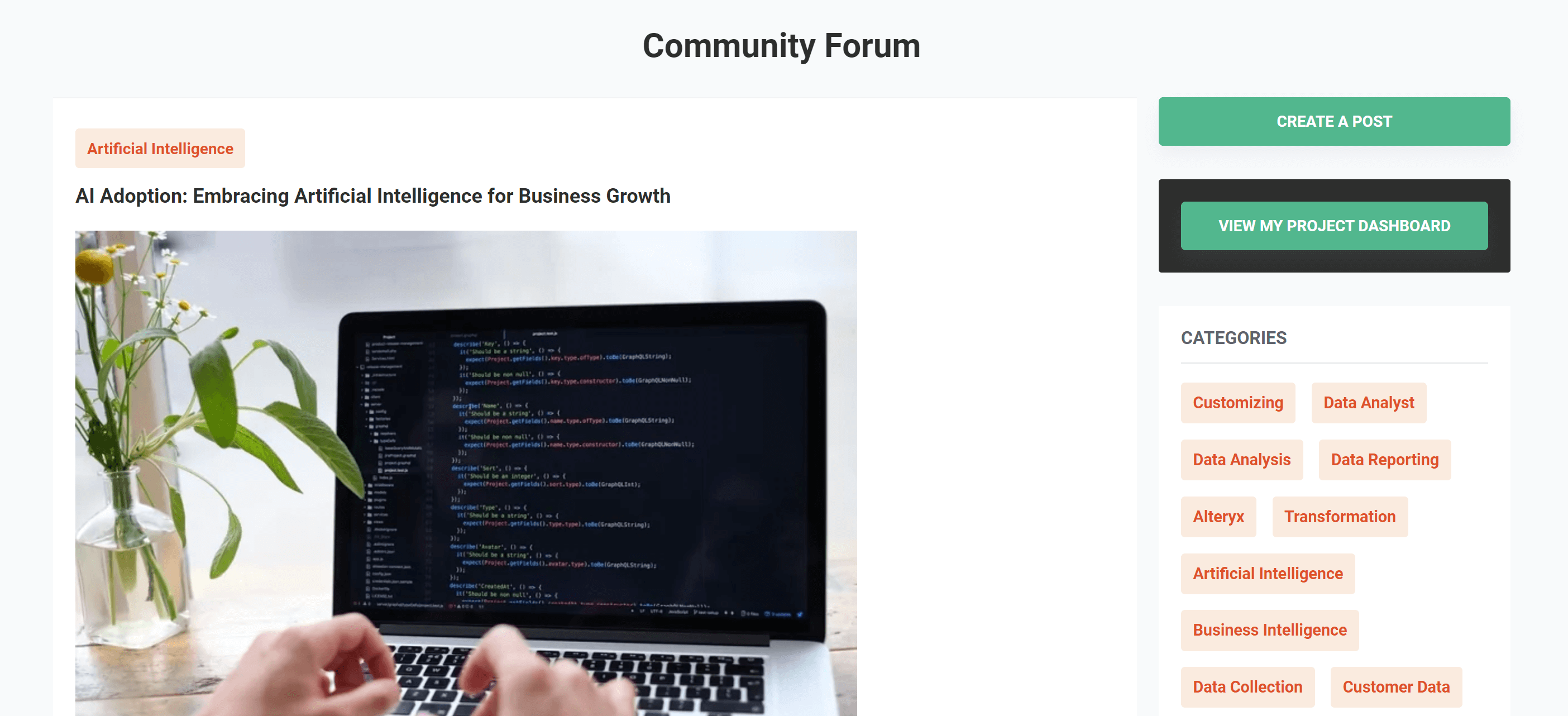The Cost of Hiring Freelance Data Analysts: What You Need to Know Before You Start

Table of content
1. Freelance Data Analysts : What You Need to Know Before You Start
2. Factors That Influence the Cost of Hiring Freelance Data Analysts
3. Project-Based vs. Hourly Rates: What’s More Cost-Effective?
4. Factors to Consider When Choosing Between Hourly and Project Pricing
5. PangaeaX: A Data Science Platform
6. Conclusion
Freelance Data Analysts : What You Need to Know Before You Start
1. Make a Concrete Plan
If you have 2-3 years of experience (or even without experience), start by researching the freelance data analysis market. Understand how others built their businesses, what tools they use, and the services they offer. Plan your next 3-6 months by identifying potential clients and addressing any skill gaps. Set aside an emergency fund to cover your expenses for the first 4-6 months, as income can be slow initially.
2. Define Your Services and Pricing
Review other freelance data analysts’ profiles to identify services that align with your skills. Research the cost of hiring freelance data analysts and choose between hourly or project-based pricing. Retainer-based models offer more consistent income. Remember to adjust your rates annually based on market trends and your growing experience.
3. Build Your Online Presence
Your online presence is essential for lead generation. Create a portfolio showcasing 3-4 projects that highlight both the technical process and business impact. Optimize your LinkedIn profile using relevant keywords like freelance data analyst and cost of hiring freelance data analysts. Engage with the data community to grow your network.
4. Identify Leads and Secure Clients
Build a list of potential clients and start pitching. Use platforms like LinkedIn to identify opportunities. Consistent outreach will help you secure your first client, which can lead to referrals and more work down the road.
5. Set Up Your Freelance Business
Register your freelance data analysis business, typically as an LLC, for tax benefits. Set up a business bank account and use software to manage contracts, invoices, and communication. Always have contract templates ready, covering deliverables, fees, and confidentiality clauses. Consider insurance to safeguard yourself and your business.
6. Enhance Your Skills
Develop both technical skills (e.g., Excel, SQL, Python, R) and soft skills like communication and project management. The combination of strong technical expertise and client-handling skills will help you scale your business.
7. Engage With the Data Community
Join online data communities on Slack, Reddit, or LinkedIn to stay informed and connect with other freelance data analysts. Participate in workshops and discussions to keep up with industry trends.
8. Grow Your Business
As your freelance business expands, focus on automating tasks like marketing and lead generation. Specialize in a niche area to offer unique services, charge higher rates, and continue growing your freelance career.
Factors That Influence the Cost of Hiring Freelance Data Analysts
As a freelance data analyst, your primary responsibility is to collect, analyze, and interpret large data sets. This role requires a high degree of technical knowledge and analytical skills, making it a highly valued profession in the freelance marketplace. However, figuring out the right rate for your services can be challenging. In this post, we’ll break down the typical cost of hiring freelance data analysts and the key factors that impact those rates.
Defining the Role of a Freelance Data Analyst
A freelance data analyst is a professional who works independently to provide data-driven insights to clients by collecting, analyzing, and interpreting complex datasets. This role requires expertise in areas like statistical analysis, data visualization, and data management. Freelance data analysts work with a wide range of clients, including businesses, non-profit organizations, and government bodies, to help them make data-informed decisions.
Typical Rates for Freelance Data Analysts
The rates charged by freelance data analysts vary based on several factors, including their level of experience, geographical location, and the complexity of the project. According to ZipRecruiter, the average hourly cost of hiring freelance data analysts in the U.S. is approximately $39 per hour. However, this rate can fluctuate between $20 to $100 per hour, depending on the aforementioned factors.
Factors That Influence Freelance Data Analyst Rates
- Experience:
Analysts with more experience generally command higher fees. Their established reputation and proven ability to deliver quality work justify these premium rates.
- Location:
The cost of hiring freelance data analysts often depends on where they are based. For instance, a freelance data analyst located in a high-cost city like San Francisco may charge more than one based in a more affordable area, such as Kansas City.
- Project Complexity:
More advanced or technically demanding projects, such as those that require working with large or intricate datasets, will typically come with higher data analyst costs.
- Client Budget:
The budget set by clients can also play a role in determining the rates. While some clients may have limited resources for freelance data analysis, others may be willing to pay a premium for superior work quality.
Project-Based vs. Hourly Rates: What’s More Cost-Effective?
When determining how to pay employees—whether through hourly rates or on a per-project basis—business owners and entrepreneurs face a crucial decision that impacts pricing and marketing strategies. Understanding which option will deliver the highest return can be complex, but familiarizing yourself with the differences between hourly and project-based pricing can lead to a more informed choice.
In this blog post, we will explore the intricacies of hourly and project-based pricing to help you make the best decision for your business. We’ll also highlight the advantages of each approach and discuss important factors to consider when deciding between hourly and project pricing.
Hourly Pricing
Hourly pricing is a common choice for many businesses and entrepreneurs, especially in fields like freelance data analysis. Clients have the flexibility to pay only for the time they utilize, eliminating the need for a comprehensive agreement on the entire project in advance. While this pricing structure can be advantageous in certain situations, it also has its drawbacks that you should weigh before committing.
Pros
Flexibility
One of the primary benefits of hourly pricing is its flexibility. Clients pay solely for the time they use, allowing them to plan their budgets effectively since they know the hourly cost upfront. Additionally, this structure gives you greater control over your workload and resources, enabling you to adjust your rates based on demand or complexity.
Hourly rates empower clients to manage their financial plans more effectively. For example, they can choose to cover any additional time beyond what was initially planned, depending on their budget constraints. This flexibility allows them to navigate their finances while still obtaining the desired results from your services.
Easier Cost Estimation
With hourly pricing, you can track the time spent on each task accurately and bill accordingly. This eliminates concerns about having insufficient or excessive investment in any project at any given time. Consequently, it helps maintain budget control, ensuring no surprises arise when it’s time to invoice; all expenses are accounted for before the project concludes.
Since you charge based on actual hours worked rather than estimates, both parties have a clear understanding of the financial expectations from the outset, ensuring fair and timely payments. Timesheets also serve as documentation of work completed, which can be beneficial in case of disputes or legal matters.
Cons
On the downside, hourly pricing can complicate upfront cost estimations, as there’s no certainty regarding how long a task will take or what challenges might occur. Additionally, billing based on hours worked could result in clients paying significantly more than anticipated if tasks extend beyond initial expectations or if additional work is required outside the originally agreed scope.
Charging by the hour can be advantageous if you can accurately predict task durations; however, project pricing may offer more benefits in certain cases, especially when dealing with freelance data analysts, where complex analyses could arise unexpectedly.
Project Pricing
Project pricing is another prevalent option, particularly for marketing services and freelance data analysis. This method involves setting a fixed price for an entire project rather than charging clients by the hour. Evaluating whether project pricing is suitable for your business necessitates careful consideration of its pros and cons.
Pros
Fixed Pricing
A major advantage of project pricing is the ability to establish a fixed price for each job or service. By setting a single fee, clients can plan their finances more effectively, knowing exactly how much they will pay in advance.
This fixed rate simplifies resource management by providing clarity regarding the effort and time required for each job. Moreover, project pricing can lead to more predictable revenue streams since businesses benefit from guaranteed income from completed projects.
Defined Scope and Budget
Having a fixed price allows you to clearly outline the project’s scope and budget before work begins. By agreeing on a set price, all parties can align on the project’s parameters while minimizing potential invoicing issues.
This structure eliminates surprises when invoicing, as clients know precisely what they’re paying upfront, which helps to prevent disputes or misunderstandings regarding payment amounts or timelines.
Resource Management
Easier resource management is another significant benefit of project pricing for marketing initiatives. When billing hourly, uncertainty always looms over how much time will be needed to complete tasks within deadlines and budget limits.
With project pricing, you can plan based on the estimated hours required for each task, ensuring no individual is overwhelmed by unexpected responsibilities during the project’s timeline.
Cons
However, a fixed rate can be both advantageous and limiting. While it provides clients with certainty, it can also restrict flexibility if unexpected challenges arise. Estimating costs without all the necessary details can be difficult, potentially leading to undercharging or overcharging based on circumstances beyond your control.
Factors to Consider When Choosing Between Hourly and Project Pricing
When selecting between hourly and project pricing, several factors warrant consideration. Your business operations play a critical role in determining which pricing model is most appropriate. If your services are diverse and often complex, an hourly rate might be more beneficial than a fixed price. This approach allows you to adjust your pricing based on the specific complexity and scope of each job, giving clients greater control over their budgets.
Your clientele also influences this decision. If you work with high-end clients requiring intricate analyses or solutions, they may prefer the predictability of project pricing over an open-ended hourly structure. Conversely, if you primarily serve small businesses or startups needing swift results at a lower cost, an hourly rate could be more suitable, enabling them to receive precisely what they require without straining their budgets.
PangaeaX : A Data Science Platform
One effective solution for businesses looking to hire freelance data analysts is to leverage PangaeaX, a dedicated freelance data science platform. PangaeaX connects clients with experienced data science freelancers who possess the technical expertise necessary for collecting, analyzing, and interpreting complex datasets. By utilizing PangaeaX, you can access a diverse talent pool, ensuring that you find the right analyst to meet your specific project needs. Whether you prefer hourly or project-based pricing, PangaeaX provides a streamlined hiring process, allowing you to focus on your core business while the platform facilitates the search for skilled data professionals.
Conclusion :
In conclusion, embarking on a freelance data analysis career can be both rewarding and challenging. By making a concrete plan, defining your services and pricing, and building a strong online presence, you can position yourself for success in this competitive field. Understanding the factors that influence hiring costs and the differences between hourly and project-based pricing will help you navigate your freelance journey effectively. Platforms like PangaeaX offer invaluable support by connecting you with experienced data analysts, streamlining the hiring process, and ensuring you find the right talent for your specific needs. As you enhance your skills, engage with the data community, and grow your freelance business, you’ll be better equipped to thrive in this dynamic industry. Whether you’re a budding data analyst or a business seeking analytical expertise, embracing these strategies will set you on a path to success in the world of freelance data analysis.
Get your data results fast and accelerate your business performance with the insights you need today.



